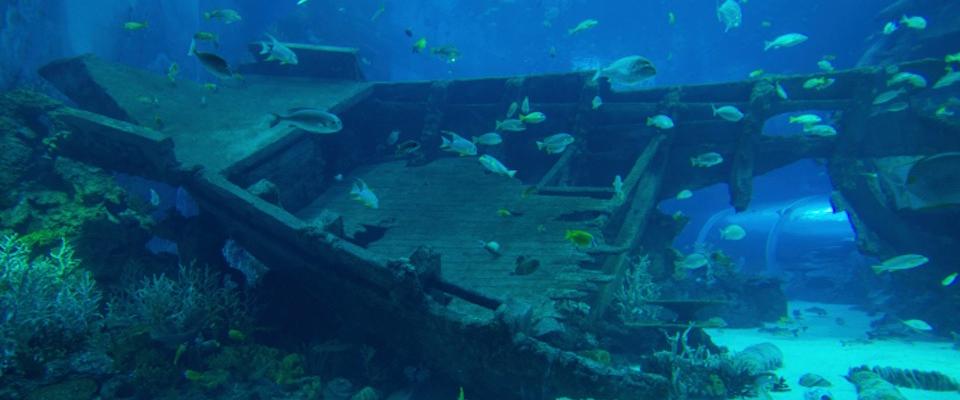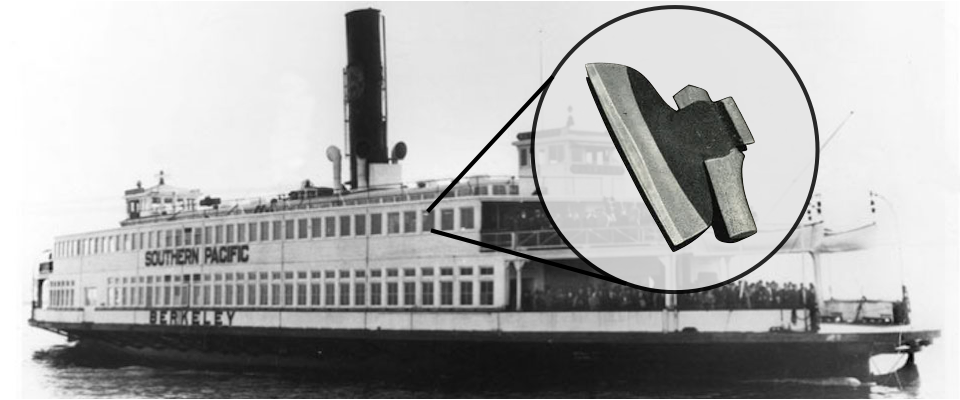The waters in and around San Francisco Bay are replete with shipwrecks—200 at least. But they’re exceedingly difficult to find, says James Allan, one of the nation’s leading maritime archeologists. He is determined to bring their secrets up from the depths.
Allan cites two primary factors that made these submerged vessels so elusive: The Gold Rush and the “dynamic” nature of the bay and its coastal environs.
“San Francisco Bay is much shallower than it was before hydraulic gold mining really got going in the Sierra. All the sediment dislodged by the Forty Niners washed into the rivers of the west slope of the Sierra and ultimately ended up in the bay, resulting in a layer of silt that’s several feet deep on average,” says Allan, who earned his Ph.D. from UC Berkeley and is a professor at St. Mary’s College in Moraga.
Combine that massive mud overburden with the heavy tides that continually slosh in, out, and around the bay, and it’s easy to understand why the region’s sunken hulks are hard to find: Many are buried, totally or partially. And there’s another curious aspect to the Bay Area’s shipwrecks.
“We have records of these wrecks, and while our investigations of the bay have been limited to date, we’ve done pretty extensive surveys of some areas where ships were reported sunk. We haven’t found many wrecks,” says Allan. “It’s puzzling. In some cases it’s likely the records aren’t correct, but we won’t know for sure until we survey more extensively.”
Allan and his colleagues haven’t struck out entirely. Using side-scan sonar and magnetometers, they have discovered a few intriguing wrecks.

“Often, particularly if it’s a wooden ship from the 19th century or earlier, all you’ll find is a pile of rocks—ballast,” Allan says. “And typically the rocks are arranged elliptically, in the shape of the hull. All the wood has rotted and been broken up and carried off by heavy tidal action.”
Further, a handful of the discovered wrecks are in remarkably good shape.
“We found one that’s in very shallow water, no more than ten feet or so,” says Allan, who won’t reveal the location due to concerns over the artifact poaching that typically ensues whenever a new shipwreck is announced. “It appears it’s from the 1860s to the 1880s, and it’s largely extant. The wood is solid, and we know that one interior hold is filled with deck equipment.”
But despite its shallow depth, the wreck is hardly a cinch to explore.
“I only dove on it once,” Allan says. “Even though it’s in only a few feet of water, it’s a black water dive. Because of the extreme turbidity caused by tidal action, there is no visibility. We had to grope around with our hands.”
Some of Allan’s greatest successes have occurred ashore. That’s because many of the bay’s ships are buried way past the current high tide line. San Francisco’s Financial District—particularly rich ground for shipwreck prospecting—is built on reclaimed land. During the Gold Rush, the site where skyscrapers now stand was a cove jammed with shipyards and chock-a-block with craft of every size and configuration. Archeologists think there are between 35 and 40 ships entombed beneath the Financial District’s office buildings.

“We have a pretty good idea of where they all are,” Allan says.
Archeologists actually get to dig around the Financial District fairly often, thanks to tough federal and state Cultural Resource Management laws, which require extensive surveys of any excavation that occurs in an area with historic or cultural significance. Sometimes discovered relics are removed, analyzed and catalogued; sometimes they’re left in situ.
“A Muni tube goes right through the middle of one of the ships,” Allan says. “It’s a Gold Rush–era vessel. Every time you’re a passenger on a bus that uses that tube, you’re traversing a largely intact ship.”
But the Financial District’s honey hole (speaking from a strictly archeological perspective) is 300 Spear Street, now occupied by the unrelentingly upscale Infinity Towers condominium complex. Back in the day—the Gold Rush day—the site was occupied by a shipyard owned by a certain Charles Hare, who employed ill-paid Chinese laborers to break up derelict hulks. Sometime in the mid-1850s, the Candace, a whaling ship, limped into the bay from the Arctic with a load of whale oil and baleen. Her seams were leaking badly, and she was condemned by a San Francisco customs agent. Hare bought her for salvage.

“She was the last ship he was dismantling, and for whatever reason, he walked away from it when the job was about half done,” says Allan, who supervised the survey of the site when it was discovered during the excavation for Infinity Towers. “She was remarkably intact, and so was the shipyard. We found Hare’s house. We found the shipwrecking site, and we found tons of salvaged parts organized in his yard.”
Allan and crew were able to retrieve the remains of the Candace and a rich trove of associated artifacts. Along with field work, the Hare shipyard project required a tremendous amount of archival research; Allan drafted James Delgado, the director of the Maritime Heritage Program at the National Oceanographic and Atmospheric Administration, for the job.
“Ultimately, we were able to put together a very detailed portrait of the shipyard and the Candace, and of maritime activity in San Francisco during the Gold Rush,” says Allan. “It was an incredibly satisfying project.”
Many of the myriad wrecks remaining could yield similar scientific dividends. Of them all, however, a case can be made that the Big Dog, the Holy Grail—whatever superlative you care to employ—is the San Augustín, a Spanish galleon loaded with gold, porcelain and silk that was beached and destroyed by heavy surf near Drake’s Bay in 1595 while en route to Acapulco from the Philippines. Though the crew was able to evacuate, most of the cargo—including, presumably, the gold and porcelains—remained on board.
“There’s little doubt that there are remains of the wreck that exist, but they’re deeply, deeply buried,” says Allan, who has researched the San Augustín extensively. “We still see evidence of the cargo washing up, mainly pottery shards. So the question is just where she is, and how deep.”





















